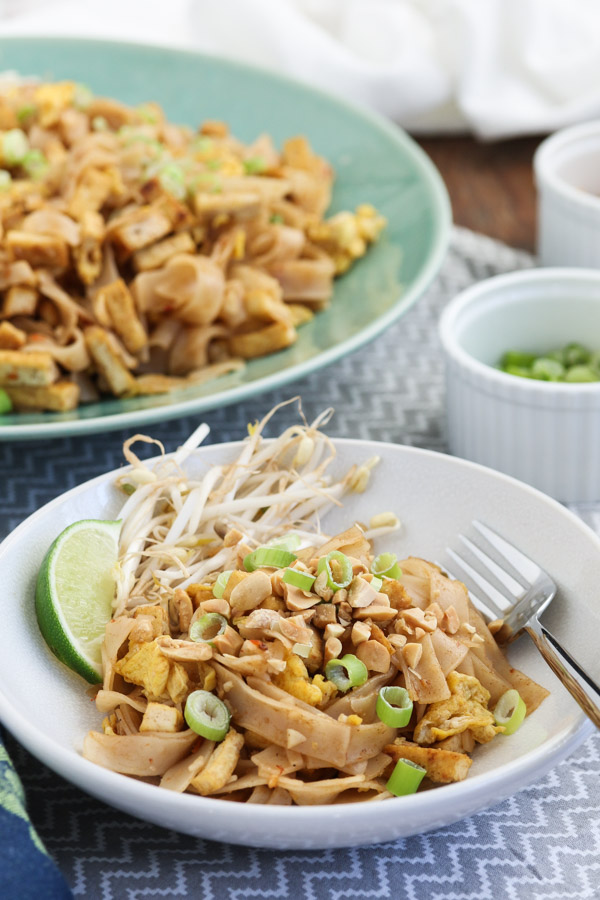
so, i’m deliberately not calling these “pad thai noodles”. not only because i have zero credibility to claim that these are in any way authentic, but also because they aren’t even really intended to be “authentic” (americanized) pad thai noodles.
a quick bit of backstory: my husband LOVES pad thai. loves it, as in, orders it 99% of the time we get thai takeout or go to a thai restaurant. so, naturally, a few years ago i decided to try to make it at home. we scoured the interwebs and found a recipe posted by a woman who was actually from thailand but she claimed the recipe was geared towards american home cooks.
once our tamarind pods, pickled radishes, and palm sugar arrived from amazon (um, red flags anyone??), we got to work in the kitchen. and the resulting recipe was pretty good. my husband declared it our best attempt at pad thai at home yet.
aaaaand then we never made it again, because it was just too much work compared to how (not) good (enough) it was.
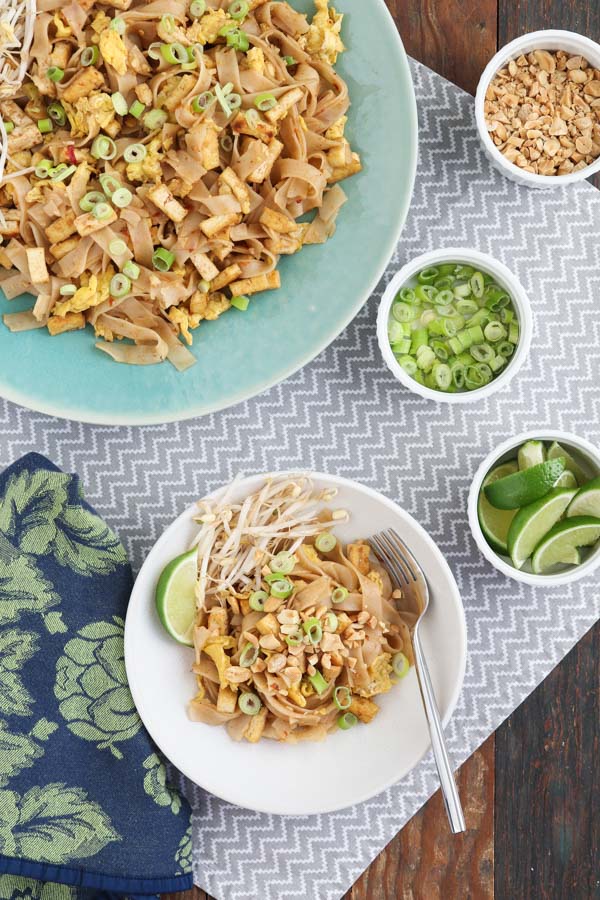
time passes, more thai takeout happens. occasionally i come across pad thai recipes that don’t require too many special ingredients (since i still have tamarind paste leftover, but more on that in the notes section) and i try them. once. most of them taste independently not very good and certainly not anything like pad thai.
so imagine how pleasantly surprised i was to stumble across displaced housewife’s weeknight pad thai. right off the bat, i noticed two things about her recipe: 1) it didn’t require lots of ingredients i didn’t have and couldn’t find and 2) she broke down the steps in a way that made the whole process seem doable, rather than totally overwhelming. as soon as we tasted the resulting noodles, i knew we were on the right track. this recipe grabbed the ‘best pad thai at home’ crown from the previous title holder, and was much easier to boot.
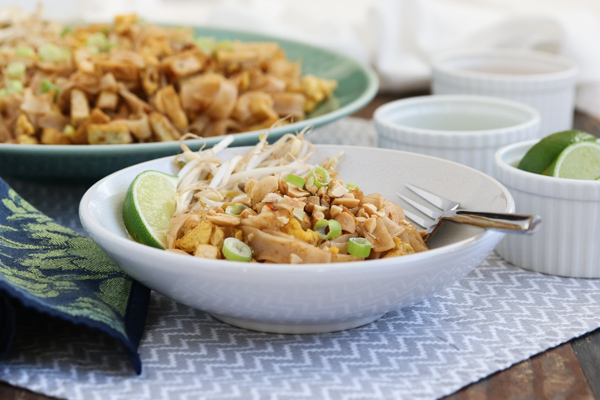
here’s the thing though: much as my husband orders pad thai 99% of the time, i get pad kee mao/drunken noodles basically every time. sooo, when i was testing and tweaking recipes for these thai noodles, i kept trying to nudge the recipe closer to pad kee mao and, invariably, my husband’s feedback on the latest version would be that the noodles were good, except for (whatever tweak i had just made to make the recipe more like pad kee mao). so, yeah.
in the end, we settled on these thai noodles that we both like. not quite pad thai, not quite pad kee mao, they are definitely a non-authentic, delicious hybrid. and i totally encourage you to tweak the recipe to your liking. as written, these thai noodles are just a little bit spicy, so you may wish to use more chili garlic paste or add crushed red pepper (my husband). or perhaps you like a stronger lime flavor (me), in which case you could squeeze a wedge over your plate before serving. regardless of how you adapt them, i hope you like these thai noodles as much as we do!
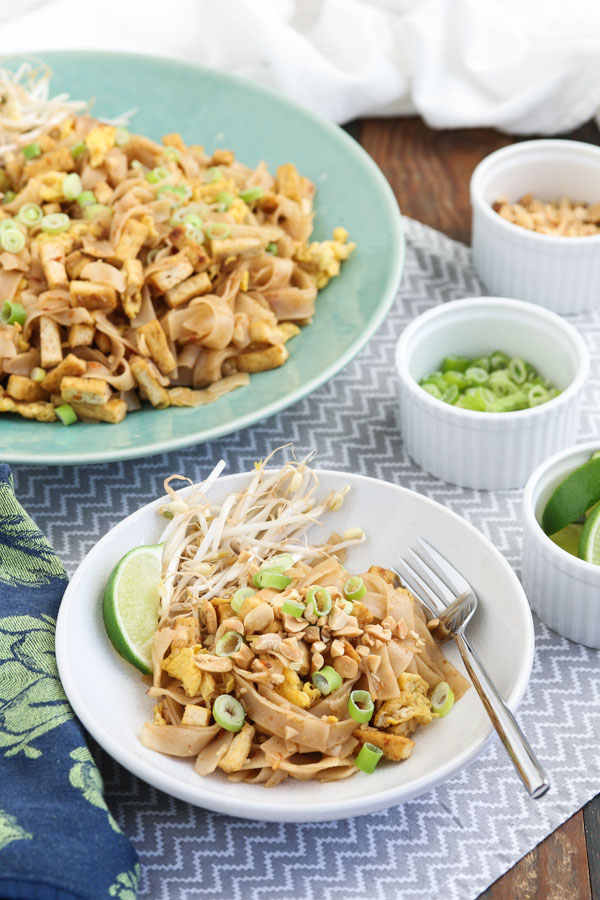
thai noodles
Ingredients
- 14 oz. (397 g.) extra firm tofu
- 8 oz. (227 g.) rice noodles
- 4 teaspoons extra light olive oil or vegetable oil, divided
- 2 tablespoons minced garlic
- 1 tablespoon peeled and minced fresh ginger
- 1 cup scallions, thinly sliced, white and light-mid green parts separated
- 3 large eggs, lightly scrambled
- 8 oz. (227 g.) boneless, skinless chicken breast, cut into thin strips
- 1 ½ cups mung bean sprouts, rinsed
- ½ cup peanuts, chopped, for serving
- lime wedges, for serving
sauce
- ¼ cup (1 7/8 oz. / 53 g.) dark brown sugar (light works too)
- 3 tablespoons fish sauce
- 2 tablespoons white vinegar
- 1 tablespoon chili garlic paste
- 1 tablespoon tamarind concentrate, see notes
- ¼ cup boiling water
Instructions
- slice the block of tofu lengthwise as if it were a deck of cards and you were cutting the deck in half to shuffle it. to press out excess water: place a few layers of paper towel on a large plate or cutting board, spread the tofu out in a single layer, put a few more layers of paper towel, then weigh the tofu down with a heavy pan or a cutting board with a few cans on top. let the tofu press while you prep the rest of the ingredients and sauce.
- set a large pot of water on the stove to boil the noodles. once the water is boiling, boil the noodles for half the amount of time that the package says to soak them for pad thai. my package said to soak for 8 – 10 minutes so i boiled the noodles for 4 minutes, until they were al dente/nearly soft. i always end up with hard, clumpy noodles when i use the soak method so boiling them avoids that problem. drain, rinse with cool water to stop them from cooking further and clumping, and set aside.
- to make the sauce, combine all of the sauce ingredients in a small bowl and whisk to combine thoroughly (see the notes section below if you’re using tamarind in block form). taste and see if the flavors are balanced, especially the tamarind (different brands vary in intensity). the sauce should taste a bit too strong but with a balance of flavors that you like. adjust if necessary. set aside.
- prep the garlic, ginger, scallions, eggs, chicken, bean sprouts, and peanuts as directed in the ingredients. i find it helpful to set them all out in bowls on the counter in the order that i will need them so i can just grab one after the other once i start cooking.
- cut the tofu into ½” x 1” (1.25 x 2.5 cm) rectangles. set a large nonstick skillet over medium heat and heat 2 teaspoons oil (if you have two large nonstick skillets and one is heavier than the other, use the heavier one here). when hot, add the tofu. gently flip the pieces over every few minutes, but don’t disturb them too often or they will start to crumble. the goal is to get most sides of each piece to be golden brown. this will take about 20 – 25 minutes, so i usually set them on a back burner and let them go while i put the rest of the pad thai together.
- set a large serving bowl next to the stove. set another large (nonstick, light enough to lift and turn with one hand when it’s full of food) skillet over medium heat and heat the other 2 teaspoons of oil. if your skillet is not nonstick, you may need to add a bit more oil between steps.
- sauté the garlic, ginger, and white parts of the scallions for 1 minute, then transfer them to the serving bowl.
- add the eggs to the empty skillet and scramble around until cooked. transfer to the serving bowl.
- add the chicken strips to the empty pan and sauté until cooked through, which should only take a few minutes. transfer to the serving bowl.
- add the sauce and noodles to the skillet and stir constantly until the noodles have absorbed most of the sauce (this doesn’t take long, about a minute). transfer to the serving bowl.
- toss everything around in the serving bowl until it’s combined together evenly. either add the green parts of the scallions, bean sprouts, and peanuts to the serving bowl and toss or serve the thai noodles as is and let folks add these extras to their own plates in the proportions they like, as you prefer.
Notes
so, yes, i do call for tamarind here. i tried recipes without it and they just don’t have the same flavor. tamarind comes in liquid concentrate (approximately the consistency of molasses), blocks, and unprocessed, natural pods. don’t buy the pods – they are a huge pain (trust me). if you can find the concentrate in a jar/can, that’s the easiest to work with, but the blocks work too, you just pull off a chunk and hydrate it with a little bit of boiling water. let the piece of paste sit in the boiling water for about 10 minutes, then, once the water is cool enough, use your fingers to break up the tamarind and dissolve it into the water, removing any fibrous bits that remain.
if the international aisle of your grocery store doesn’t have tamarind, you can always order it online. so far i’ve been able to buy it in various grocery stores that i shop at but, for reference, here’s what you’re looking for: tamarind concentrate.
if you can’t find tamarind and don’t want to order it or wait for it to arrive, you can substitute in 2 tablespoons fresh squeezed lime juice (or to taste), but the noodles will obviously have a more pronounced lime flavor, rather than just the pure sour taste of tamarind.
adapted from displaced housewife’s weeknight pad thai and mark bittman’s pad thai.
Nutrition Facts
thai noodles
Serves: 5
| Amount Per Serving: | ||
|---|---|---|
| Calories | 565 | |
| % Daily Value* | ||
| Total Fat | 0 | |
| Saturated Fat | 0 | |
| Trans Fat | ||
| Cholesterol | 0 | |
| Sodium | 0 | |
| Total Carbohydrate | 0 | |
| Dietary Fiber | 0 | |
| Sugars | ||
| Protein | ||
| Vitamin A | Vitamin C | |
| Calcium | Iron | |
* Percent Daily Values are based on a 2,000 calorie diet. Your daily values may be higher or lower depending on your calorie needs.
tasty seasons
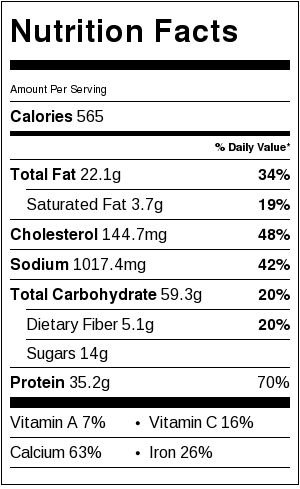
please note this page contains affiliate links, which means that if you make a purchase after clicking from here, i will earn a small commission from amazon at no additional charge to you. i only link to products that i use and love. thank you for supporting tasty seasons!

 Save to BigOven
Save to BigOven
Already drooling over this. Weeknight dinner perfection that everyone in the family will love. You’ve got a winner on your hands here!
thanks karly! i figure we all need more weeknight dinner ideas, especially ones that can be customized with a little more or less of this or that. 🙂 now here’s hoping we can resist the lure of takeout!
We love both pad thai and drunken noodles, so this sounds perfect! I almost never bother to make thai food because of the list of special ingredients. This one sounds delicious and doable! Thanks!!
thanks liz! i was so happy to finally come up with a recipe that was worth making at home (especially since it’s a bit less fussy overall). i hope you enjoy these thai noodles. 🙂 i’m looking forward to making this again soon!